
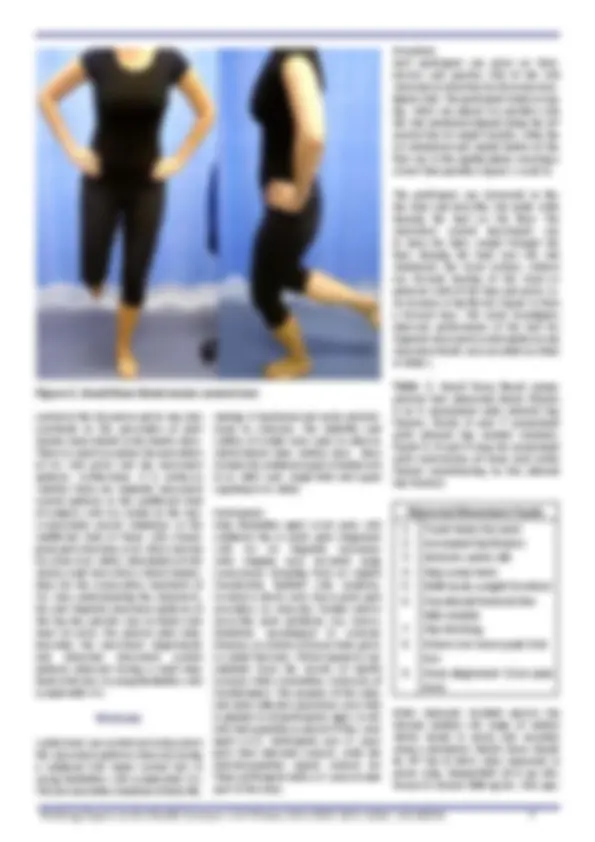
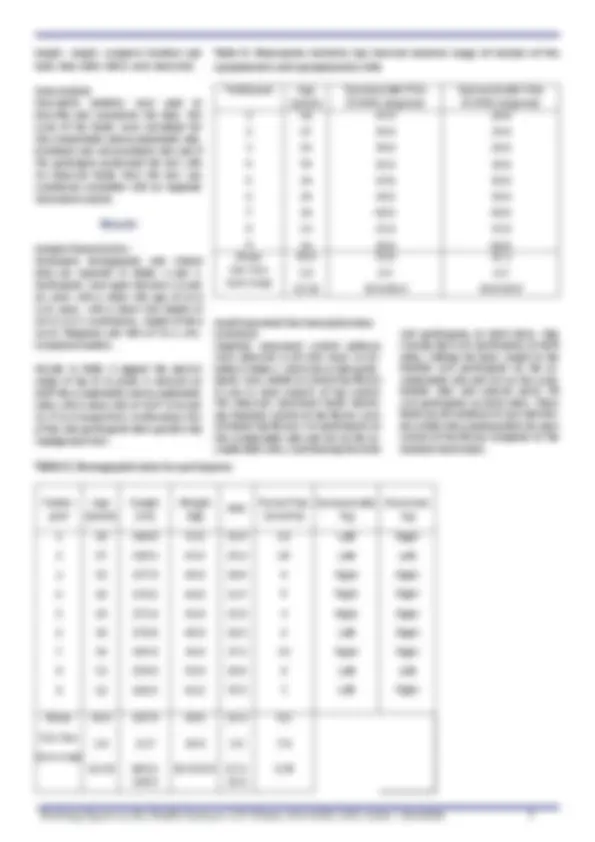
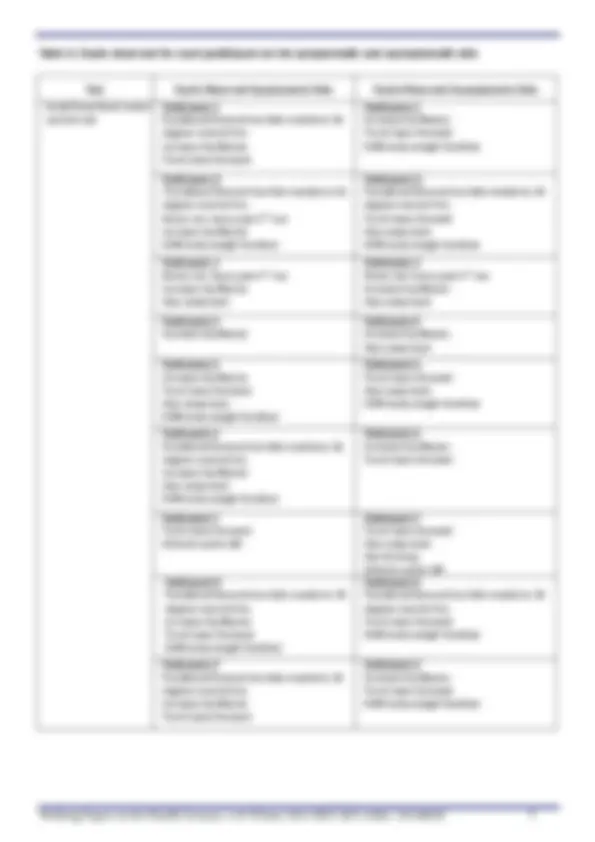
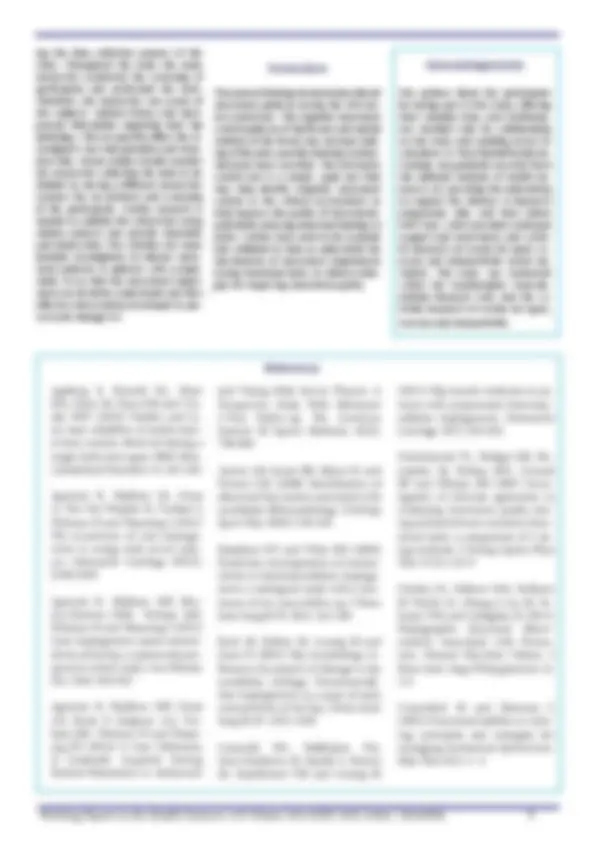
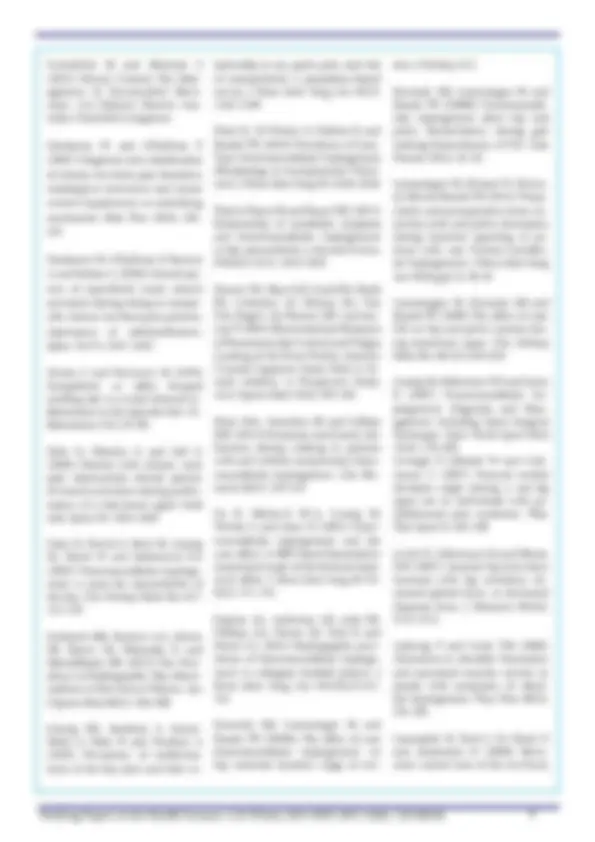
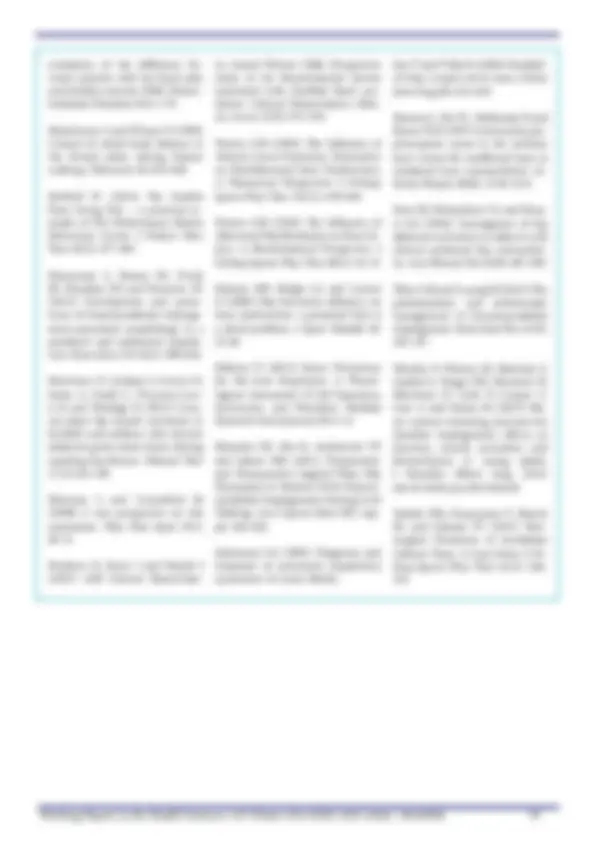


Study with the several resources on Docsity

Earn points by helping other students or get them with a premium plan


Prepare for your exams
Study with the several resources on Docsity

Earn points to download
Earn points by helping other students or get them with a premium plan
Community
Ask the community for help and clear up your study doubts
Discover the best universities in your country according to Docsity users
Free resources
Download our free guides on studying techniques, anxiety management strategies, and thesis advice from Docsity tutors
Observed Movement Faults Other measures included passive hip internal rotation (IR) range of motion (ROM) tested in prone and recorded using a plurimeter. ...
Typology: Slides
1 / 10

This page cannot be seen from the preview
Don't miss anything!







Nadine Botha1, MRes BPhyst, Senior Physiotherapist
Correspondence: nclb1e08@soton.ac.uk
Martin Warner1, PhD MSc, Senior Research Fellow in Musculoskeletal Biomechanics
Mo Gimpel2, BSc MCSP, Head of Sports Medicine
Sarah Mottram1,2, MSc MCSP, Director Movement Performance Solutions Ltd
Key words: Femoroacetabular Impingement, Hip and Groin Pain, Young Footballers, Impaired movement control
Mark Comerford 1, B.Phty, Director Movement Performance Solutions Ltd
Maria Stokes 1, PhD FCSP, Professor of Musculoskele- tal Rehabilitation
(^1) Faculty of Health Sciences, University of Southampton, UK (^2) Arthritis Research UK Centre for Sport, Exercise & Osteoarthritis (^3) Movement Performance Solutions Ltd, Chichester UK (^4) Southampton Football Club, Southampton UK
Femoroacetabular impingement (FAI) is a hip condition involving abnormal morphologic features of the proximal femur and/or the acetabulum (Ganz et al. 2003). Cam and pincer are two types of FAI described. Cam impingement occurs when the femoral head has an abnormally large radius, with a loss of the normal spherical junction between the femoral head and neck, while pincer impingement involves over-coverage of the acetabulum(Ito et al. 2001). In both cam and pincer impingement, bony contact occurs with the combined movement of hip flexion, adduction and internal rotation (Ganz et al. 2003). This abnormal contact between the femur Conflict of interest statement: and the acetabular rim at the end of hip Disclosure: Sarah Mottram and Mark Comerford are Co-Directors of Movement Performance Solutions Ltd, which educates and trains sports, health and fitness professionals to better understand, prevent and manage musculoskeletal injury and pain that can impair movement and compromise performance in their pa- tients, players and clients. None of the other authors has any conflict of interest to
declare
Background: Femoracetabular impingement (FAI) is common in footballers and causes hip pain, which may arise from abnormal morphologic features involving the proximal femur and/or acetabulum. Early detection and treatment are important to prevent the development of osteoarthritis (OA). Despite extensive publications on FAI, little is known about hip movement patterns associated with FAI, which may indicate mechanisms of dysfunction to inform development of effective interventions. Design: Observational pilot study Methods: Nine male academy footballers aged 12–18 years with hip/groin pain, diagnosed with FAI on magnetic resonance imaging, were studied. The hip and pelvis were observed whilst the participant performed a small knee bend test, to see if any abnormal movement patterns were present. Findings: In all nine cases, abnormal movement patterns were observed clinically. Participants were unable to control hip flexion in one or more aspects, mostly seen as the trunk leaning forwards and the hip moving into increased flexion. Participants also demonstrated poorly controlled hip medial rotation. Discussion: These preliminary findings suggest impaired movement control exists in academy footballers with symptomatic FAI. Identifying and classifying these movement faults may prove necessary for effective prevention and management of symptoms by controlling movement adaptations. Further studies are warranted to validate these findings against motion analysis technology and muscle activity using electromyography, and to further understand the mechanisms of movement dysfunction. Since FAI is a strong predictor in the development of hip OA, it is vital that strategies are developed to prevent FAI and its progression to OA.
are suggested for identifying deficits (Mottram & Comerford 2008) and people with pain often fail these tests and demonstrate impaired movement control (Luomajoki et al. 2008; Worsley et al. 2013). Impaired movement control can imply disturbance or abnormality in the movement system (Sahrmann 2002; O’Sullivan 2005). It is based on the basic principle that loss of precise movement is the result of repetition of movements and positions in specific directions with activities (Sahrmann 2002). The loss of this movement precision is proposed to contribute to repeated stresses to tissues, causing alterations in control strategies. Also, it has been suggested that impaired movement control at the hip and pelvis has the potential to produce compensa- tion and injury at other joints (Reiman et al. 2009; Powers 2010). In particular, there is evidence that movement impairments at the hip and pelvis may trigger injuries such as anterior cruciate ligament tears (Hewett et al. 2005), iliotibial band syndrome (Noehren et al. 2007), and patellofemoral joint pain (PFJP)(Powers 2003; Powers 2010). Therefore, improvement in movement
range of motion (ROM), is an increasingly recognised cause of hip pain in young people, resulting in development of deep chondral injuries, labral detachment and a precursor for osteoarthritis (OA) of the hip(Ganz et al. 2003; Beck et al. 2005; Harris-Hayes & Royer 2011; Agricola et al. 2013).
Football places a high demand on the hip joint, as it involves sprinting, jumping and kicking, which subject the hip to high loads and torsional forces; thereby affecting the joint, surrounding capsule, ligaments and associated muscles (Saw & Villar 2004). Cam-type deformities can be recognisable from the age of 13 years and are more prevalent and pronounced in young football players than in their non-athletic peers (Agricola et al. 2011). Monazzam et al. (2013) found that cam and pincer morphology can occur as early as 10 to 12 years of age in a population with no known orthopaedic hip complaints. Professional football players are likely to start sporting activities at a young age (Kapron et al. 2011), therefore high physical demands placed on their joints during the critical stages of hip development may lead to abnormali- ties consistent with FAI and could cause later OA (Leunig et al. 2007; Agricola et al. 2014). In addition, continued sports participation could cause FAI to become symptomatic, as the increased loading may exacerbate the labral or articular cartilage damage (Kapron et al. 2011).
The bony anatomy causing FAI is common, particularly in active populations (Tibor & Leunig 2012). Prevalence in the general population is 14% to 35%; more frequent in males (Gosvig et al. 2010; Hack et al.
the prognosis and identification of those patients who ultimately develop OA is still unclear (Bardakos & Villar 2009; Clohisy et al. 2011).
Studies of hip kinematics, muscle activation and biomechanics associated with FAI (Austin et al. 2008; Kennedy et al. 2009b; Kennedy et al. 2009a; Lamontagne et al. 2009; Lamontagne et al. 2011; Rylander et al. 2011; Morrissey et al. 2012; Hunt et al. 2013), indicate abnormal hip and pelvic movement. However, movement faults contributing to the impairment of the ability to control hip and pelvic movement associated with FAI has not been studied and may indicate mechanisms of dysfunction and inform development of effective inter- ventions. The efficiency of movement control can be evaluated with movement control tests, in which a person is asked to cognitively control movement at a specific joint (e.g. the hip), whilst challenging the ability to maintain this control with movement at an adjacent joint (Comerford & Mottram 2001; Comerford & Mottram 2012; Roberts 2013; McNeill 2014). Such tests of movement control
height, weight, symptom duration and body mass index (BMI) were measured.
Data Analysis Descriptive statistics were used to describe and summarise the data. The sums of the faults were calculated for the symptomatic and asymptomatic side, dominant and non-dominant side and if the participant performed the test with no observed faults then the test was considered controlled with no impaired movement control.
Sample Characteristics Participant demographic and clinical data are reported in Tables 2 and 3. Participants were aged between 12 and 18 years with a mean (SD) age of 14. (1.9) years, with a mean (SD) height of 167.8 (13.7) centimetres, weight of 60. (14.9) kilograms and BMI of 21.2 (2.5). Symptom duration.
Results in Table 3 suggest the passive range of hip IR in prone is reduced on both the symptomatic and asymptomatic sides with a mean (SD) of 31.0° (6.6) and 31.3° (6.3) respectively. Furthermore, five of the nine participants had a positive hip impingement test.
Small Knee Bend Test Descriptive Mea- surements Impaired movement control patterns were observed in all nine cases, as de- tailed in Table 4, which shows that partic- ipants were unable to control hip flexion in one or more aspects of hip control. The observed movement faults indicat- ing impaired control of hip flexion were increased hip flexion (7/9 participants on the symptomatic side and 6/9 on the as- ymptomatic side), trunk leaning forwards
(6/9 participants on both sides), hips swaying back (4/9 participants on both sides), shifting the body weight to the forefoot (5/9 participants on the as- ymptomatic side and 4/9 on the symp- tomatic side) and anterior pelvic tilt (1/9 participants on both sides). These faults are all variations of ways individu- als exhibit their predisposition for poor control of hip flexion compared to the standard benchmark.
illustrated in Figure 2 and described in the methods section. The results of the present study demonstrated hip me- dial rotation impaired movement con- trol with the observed fault of the knee moving medially to the 2nd metatarsal during the single leg SKB motor control test (Ageberg et al. 2010). The observed movement fault of hip hitching may also suggest impaired hip medial rotation control. It is proposed that hip and pelvic coronal plane asymmetry is usually asso- ciated with some component of axial or rotation control problem but research is required to support this. If the functional femoral line falls medial to the 2nd meta- tarsal it may be due to inappropriate foot placement with the 2nd metatarsal not on the 10° neutral line or the line of the femur rotating medially. Either way the possible consequences may be increased valgus stress at the knee, increased mid- foot pronation and/or increased medial rotation at the hip. In a single case study of acetabular hip pathology, Austin et al. (2008) also reported uncontrolled hip medial rotation, while, Levinger et al. (2007) revealed a similar finding in PFJP. It has been suggested that increased hip medial rotation can cause abnormal loading of the anterior hip structures; leading to hip pain and possibly contrib- ute to FAI pathology (Sahrmann 2002; Austin et al. 2008). Altering the frontal and transverse plane hip kinematics de- creases hip pain and possibly off loads the anterior hip structures (Austin et al. 2008). Casartelli et al. (2011) suggested that FAI-related hip muscle weakness might result in lower limb kinematic al- teration which could cause functional disability. These alterations in movement patterns could exacerbate symptoms, probably due to the increased ante- ro-medial contact stress in the femorace- tabular joint (Yazbek et al. 2011), where bony contact and joint damage can occur. Lewis et al. (2007) reported that the hip demonstrates increased medial rotation if the ilio-psoas force decreases and the tensor fascia latae (TFL) force increases, which causes an imbalance and produces excessive anterior hip loading. Converse- ly, (Casartelli et al. 2011) reported lower electromyographic (EMG) activity of the TFL in symptomatic FAI compared to con- trols. This lower EMG activity in TFL may possibly be a protective or guarding re- sponse. Since TFL has a combined action of hip flexion and medial rotation, which when combined may provoke hip symp- toms. Therefore, preventing this action
may simply be a way of decreasing the provocative loading which may lead to the reduction in TFL activity.
In the present study, impaired movement control patterns were observed on both the symptomatic and asymptomatic sides during the SKB motor control test. The fact that impaired hip flexion movement control was not more prevalent on the symptomatic side, may indicate that the SKB motor control test is more a gener- al measure of altered hip control rather than directly related to loading the im- pingement biomechanics. However, this was a similar finding to Morrissey et al. (2012) who found the injury-associated muscle imbalance ratio of Gluteus Me- dius : Adductor Longus (GM:AL) during a standing hip flexion to 90° test in sub- jects with chronic groin pain was also present in the uninjured limb. This pos- sibly reflects a predisposition to injury, or a bilateral effect of injury, and may have a significant consequence for rehabilita- tion planning and injury prevention (Mor- rissey et al. 2012). Also, sensorimotor changes have been demonstrated in the contralateral limb after injury on one side (Denko & Petricevic 1978), while Sharma et al. (1997) showed no differences in proprioceptive acuity between sides in a group of subjects with unilateral knee OA. It is possible that a disruption in the normal neurosensory system reduces the precision of the control of the level of muscle activation in both the symptomat- ic and asymptomatic sides. Morrissey et al. (2012) also suggested that the altered GM activation they observed during hip movement may be indicative of many factors, such as relative abductor muscle inhibition, altered movement patterns or muscle atrophy. Determining GM activa- tion and muscle atrophy was beyond the scope of the present study.
In a kinematic study of level gait, Kenne- dy et al. (2009b) found that patients with symptomatic FAI had decreased frontal and sagittal hip ROM and frontal pelvic mobility. During a maximum depth squat, Lamontagne et al. (2009) reported differ- ences in sagittal plane pelvic kinematics and overall movement performance be- tween those with and without FAI during a maximum depth squat. As argued by Kennedy et al. (2009b) and Casartelli et al. (2011), these alterations in movement could be the result of strategy adopted by patients to compensate for a hip mus- cle function deficiency. In the present
study, the observed movement faults of increased hip flexion, trunk leaning for- ward, hip swaying back and anterior pel- vic tilt are all direct observations of dif- ferent strategies of increasing hip flexion. While, the observed movement faults of the knees not moving past the second toe, knee alignment < 2 cm past the toes and the shift of body weight forward may all indicate reduced ankle and knee flex- ion, which may have an indirect conse- quence of increasing the risk of hip flexion as compensation during functional activi- ties. In a second study, Lamontagne et al. (2011) found no significant differences between preoperative and postoperative pelvic motion, or with the pelvic and hip angles at peak squat depth. However, the squat performance improved postopera- tively with an increased pelvic posterior pitch during the descent phase of squat. The authors suggested that the increased squat depth and improved pelvic poste- rior pitch may be due to the corrective surgery having eliminated the mechani- cal restriction and reduced joint pain, by debridement of the unstable labrum. The possible mechanical restriction and pain within the population studied may pro- vide an explanation for the altered move- ment patterns observed in the present study. However, wide variability in post- operative test times (8-32 months) could have affected the detection of significant differences between preoperative and postoperative kinematic values. The au- thors have not mentioned whether the participants had active rehabilitation or movement retraining which may explain some of the positive response postop- eratively. Also, it has been reported that hip abductors have an important role in controlling trunk position in the frontal plane (MacKinnon & Winter 1993), which possibly also relates to impaired hip me- dial rotation control. Limited research exists around motor control issues in hip pathologies and no literature was found specifically investigating hip flexion im- paired movement control. Therefore, the cause of the impaired movement control patterns observed cannot be determined by the present study.
The findings of this pilot study add to the limited evidence surrounding impaired movement control in young football- ers with FAI. However, the small sample size and the absence of a control group limit our ability to conclusively answer the many questions that exist. Some bias may have been introduced dur-
ing the data collection process of the study. Throughout the study the same researcher conducted the screening of participants and performed the tests. Therefore, the researcher was aware of the subjects’ medical history and back- ground information regarding their hip pathology. This can possibly affect the in- vestigator’s test interpretation and intro- duce bias. Future studies should consider the researcher collecting the data to be blinded by having a different researcher conduct the recruitment and screening of the participants. Further research is needed to validate this clinical test using motion analysis and provide kinematic and kinetic data. This will allow for more detailed investigation of altered move- ment patterns in patients with sympto- matic FAI so that the movement impair- ment can be better understood and then effective interventions developed to pre- vent and manage FAI.
The present findings demonstrate altered movement patterns during the SKB mo- tor control test. The impaired movement control patterns of hip flexion and medial rotation of the femur may increase load- ing of the joint, possibly leading to abnor- mal joint stress overtime. The SKB motor control test is a simple, rapid test that may help identify impaired movement control in the clinical environment to help improve the quality of movements, potentially reducing abnormal loading on joints. Further tests need to be explored and validated to help us understand the mechanisms of movement impairments during functional tasks, to inform strate- gies for improving movement quality.
The authors thank the participants for taking part in this study; offering their valuable time, and Southamp- ton Football Club for collaborating on the study and enabling access to volunteers in their football academy. Funding was gratefully received from the National Institute of Health Re- search, UK, providing the studentship to support the Masters in Research programme (NB), and from Solent NHS Trust, which provided continued support and investment, and Arthri- tis Research UK Centre for Sport, Ex- ercise and Osteoarthritis (Grant No. 20194). This study was conducted within the Southampton Musculo- skeletal Research Unit, and the Ar- thritis Research UK Centre for Sport, Exercise and Osteoarthritis.